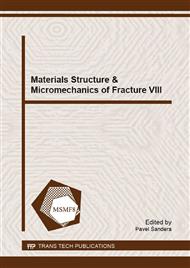p.607
p.611
p.615
p.619
p.623
p.627
p.631
p.635
p.639
Corrosion-Mechanical Behavior of T91 and 14-19Cr ODS Steels Exposed to Flowing Lead-Bismuth
Abstract:
This work describes the behavior of T91 (9Cr ferritic-martensitic steel), MA957 ODS (14%Cr, 0.3Mo, 0.9Ti, 0.25%Y2O3) and PM2000 ODS (19%Cr, 5%Al, 0.25%Y2O3) steels produced by mechanical alloying process, after long-term exposure to liquid lead-bismuth eutectic. Small bend specimens were pre-strained, then exposed to flowing lead-bismuth at 350°C for 100, 500 and 1000 hours. After exposure, the specimens were examined by using SEM equipped with EDX. The resulting changes of surface and built-up oxide layers are discussed. Liquid Metal Embrittlement, LME, crack initiation was not observed in the specimens. The absence of LME in these conditions is discussed.
Info:
Periodical:
Pages:
627-630
Citation:
Online since:
December 2016
Price:
Сopyright:
© 2017 Trans Tech Publications Ltd. All Rights Reserved
Share:
Citation:


